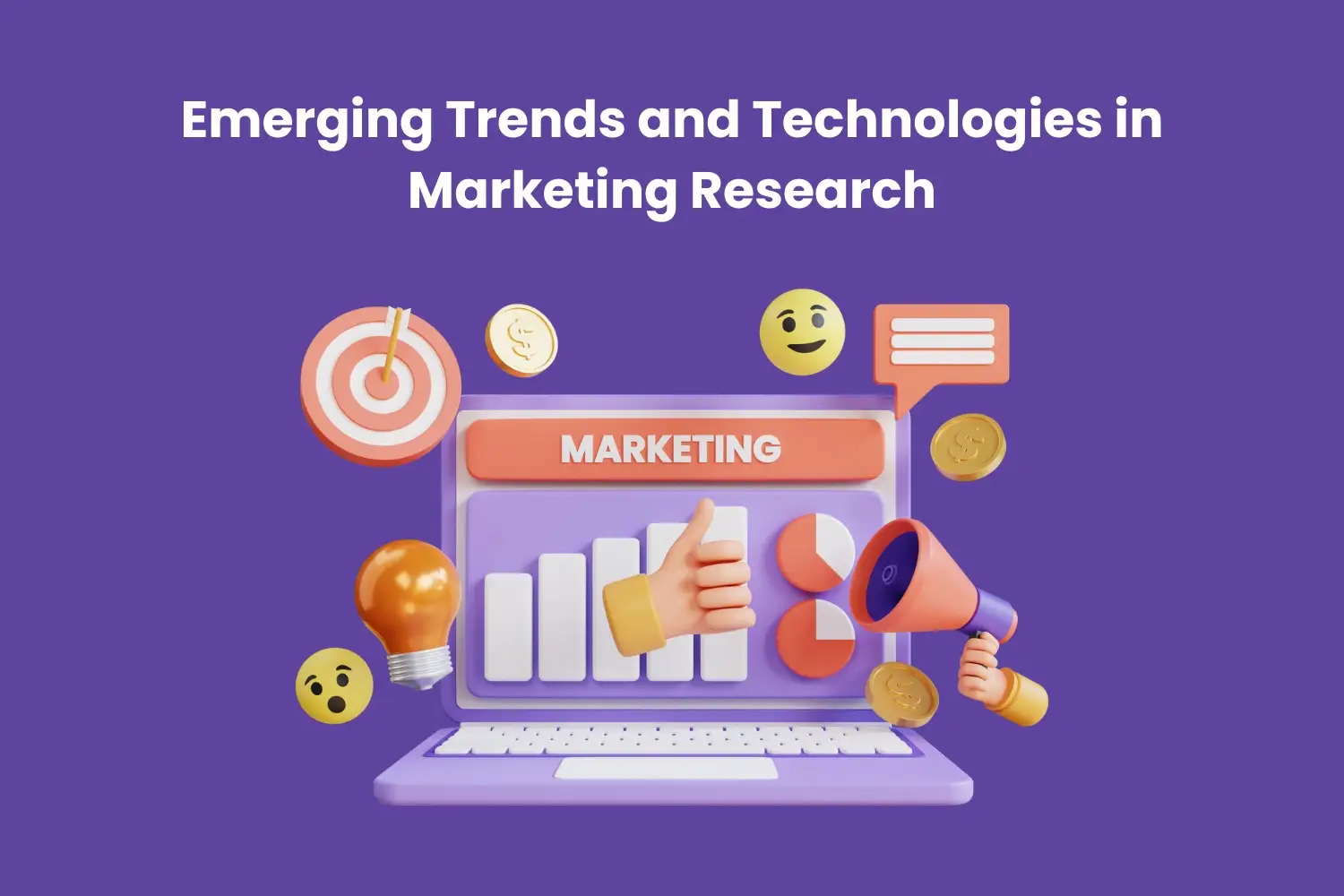Last Updated on March 15, 2024 by Team Experts
In marketing, staying ahead of the curve is not just an advantage; it’s a necessity. As businesses strive to understand and connect with their audiences in more meaningful ways, the realm of marketing research undergoes constant transformation. In this blog, we will delve into the emerging trends and technologies shaping the future of Marketing Research. Whether you’re a seasoned professional or exploring the field through Marketing Courses, understanding these innovations is pivotal for staying at the forefront of the industry.
Unlocking the Essence: What Is Marketing Research?
Before delving into the newest trends and technology, let’s clarify what marketing research is. The essence of marketing research is the act of obtaining, evaluating, and interpreting data on the market—including specifics about a target audience, rivals, and the industry as a whole. It acts as a compass for companies, directing their strategic choices and guaranteeing the effectiveness and knowledge of their marketing initiatives.
Exploring Emerging Trends in Marketing Research
Let’s explore the Emerging Trends in Marketing Research:
Artificial Intelligence (AI) and Machine Learning (ML): The use of ML and AI in marketing research has revolutionised the field. With these tools, marketers can quickly go through enormous volumes of data to find patterns, trends, and customer behaviour that they may have missed otherwise. Algorithms powered by AI can forecast market trends, simplify decision-making procedures, and provide insights into consumer preferences.
Predictive Analytics: Statistical algorithms and past data are used in predictive analytics to predict future trends and behaviours. This is known as risk mitigation, opportunity identification, and customer choice prediction in marketing research. Businesses may make data-driven choices that align with future market expectations by using predictive analytics.
Voice Search and Sentiment Analysis: Voice search has grown in importance as voice-activated devices have become more commonplace in consumer information searches. Voice data analysis is increasingly included in marketing research, offering insights into customer language and tone. A subset of this trend that enables firms to determine public opinion and adjust their tactics appropriately is sentiment analysis.
Augmented Reality (AR) and Virtual Reality (VR): Immersion-based experiences are provided by AR and VR technologies, and their use in marketing research is growing. Researchers may test product ideas, study customer behaviour in virtual settings, and recreate real-world circumstances thanks to these technologies. A greater knowledge of how customers engage with goods and services is possible thanks to this practical approach.
The Role of Marketing Courses in Adapting to Change
In an environment of relentless change, experts and aspiring marketers must remain current on the newest trends and technology. Marketing classes are a great way to get the information and abilities required to work in the always-changing marketing research profession. These courses provide a systematic learning route that enables people to use these breakthroughs in real-world circumstances, whether grasping predictive analytics or the complexities of AI applications.
Strategies for Incorporating Emerging Trends in Marketing Research
Here we explore the strategies for Incorporating Emerging Trends in Marketing Research:
- Invest in Continuous Learning: The dynamic nature of the marketing industry necessitates a dedication to ongoing education. An online tutorial platform Tutor Hunt that connects teachers and students. Marketing courses provide professionals with an organised way to keep informed about new trends and ensure they can use the newest technology and research approaches in their projects.
- Build a Tech-Savvy Team: Put together a knowledgeable team with cutting-edge technology and conventional marketing research techniques. A combination of technical know-how and experience guarantees that your team can use the newest technologies to get valuable insights from data.
- Embrace Data Privacy and Ethical Considerations: Given the growing dependence on data-driven technology, it is imperative to prioritise ethical and data privacy concerns. Marketing research professionals need to know the moral and legal ramifications of gathering and using data to build customer trust and stay in compliance with laws.
- Collaborate Across Disciplines: The combination of technology and marketing necessitates disciplinary cooperation. To use an integrated approach to marketing research and collaborate with specialists in data science, artificial intelligence, and related domains. Collaborating across disciplines may result in creative fixes and a better understanding of customer behaviour.
Conclusion
Adopting new trends and technology is not a choice but a strategic need in marketing research. Future marketing research will be innovative and flexible, from the combination of AI and predictive analytics to the immersive experiences provided by AR and VR. Investing in marketing courses gives professionals who want to stay ahead of the curve a solid basis for comprehending and utilising these trends, keeping marketing research’s compass sharply aligned with customers’ and enterprises’ constantly shifting demands.
Read more: Application of Virtual and Augmented Reality Technologies

